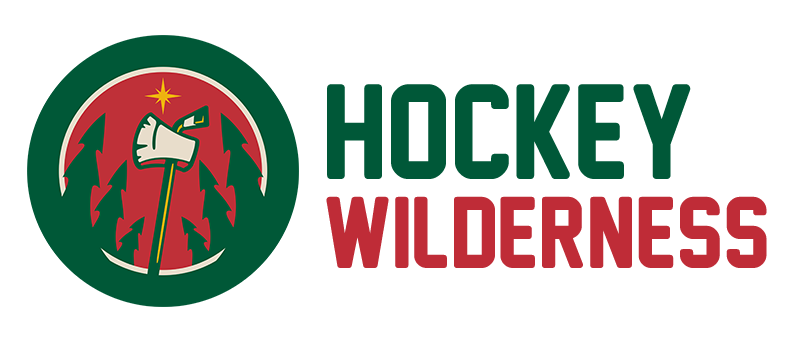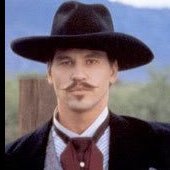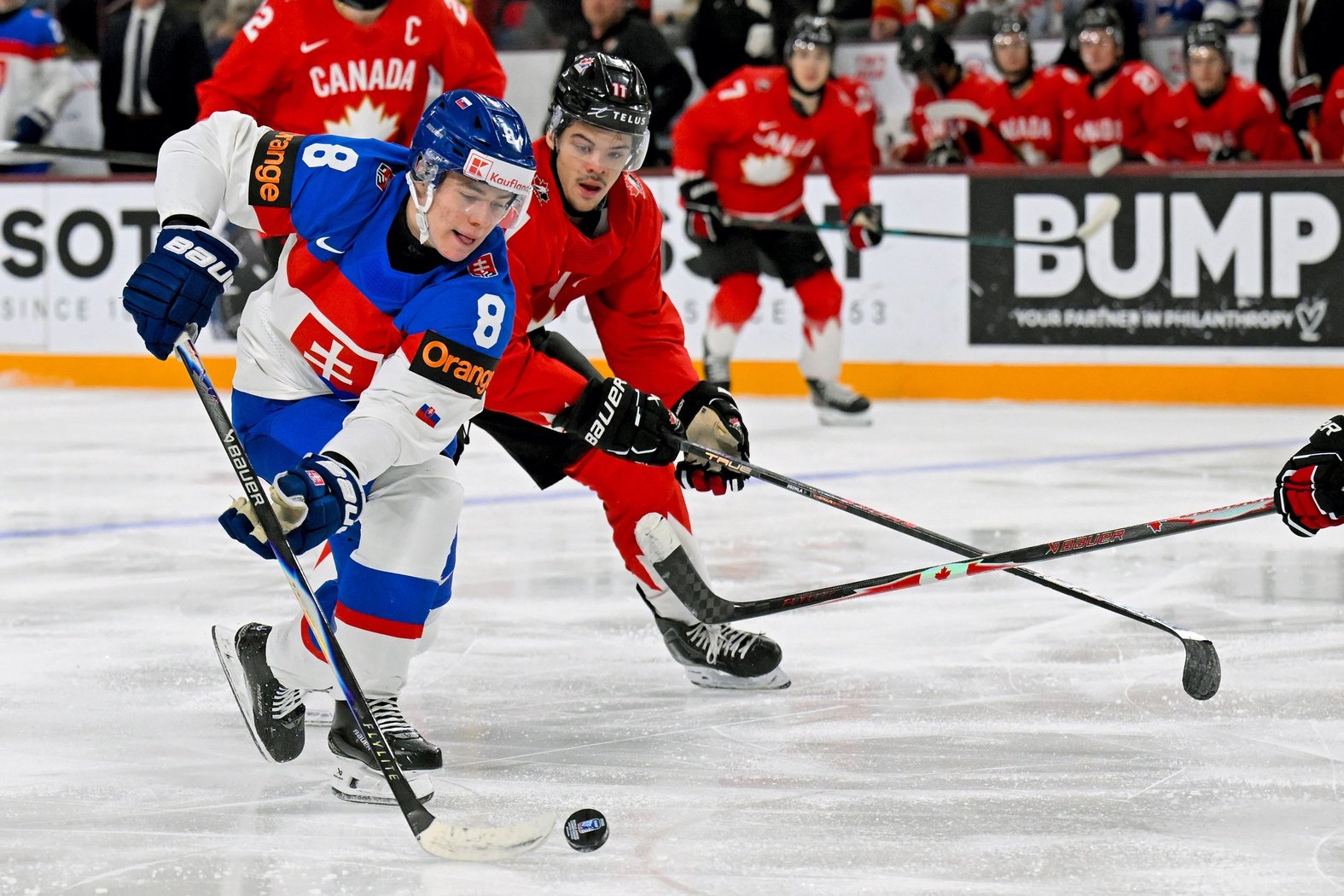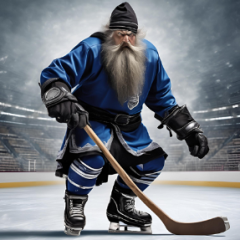All Activity
- Today
-
Benak has Canada fans worried after putting Czechia up 3-2 heading into the 3rd period.
- 5 replies
-
- minnesota wild
- nhl
-
(and 1 more)
Tagged with:
- Yesterday
-
Article: Nobody Breaks Out the Puck Better Than Quinn Hughes
Pablo replied to Bekki Antonelli's topic in Minnesota Wild Talk
That feed last night to Eek for the goal was insane!!!- 5 replies
-
- 2
-

-
- minnesota wild
- nhl
-
(and 1 more)
Tagged with:
-

Article: The Quinn Hughes Trade Changed Everything
OldDutchChip replied to Eric Forga's topic in Minnesota Wild Talk
maybe Winny would like to take Jiri as that 1st pick equivalent.....who just needs a change of scenery? 😉 i'd rather we keep Harty and ship out Foligno (if there's an option) you right - Winny is not yet in Vancouver mode - but there has to be something brewing over there. last place in the league at mid point is not a fluke.- 34 replies
-
- minnesota wild
- nhl
-
(and 1 more)
Tagged with:
-
At least once a season, a discourse on wearing hockey jerseys emerges on social media. Who “can” or “should” wear jerseys? Where are they appropriate to wear? Is there a rhyme or reason to it? Without getting into the specifics, some people have very specific and annoying ideas on who is “allowed” to wear jerseys, according to them. Personally, I think jerseys are great, and while it might be a little weird to see someone wearing a jersey from a team that isn’t actually playing in a particular game, to each their own. If I’m at a Minnesota Wild vs. Florida Panthers hockey game and someone wants to wear a McDavid jersey, I’m not gonna be bothered. The IIHF World Juniors Championship has been in town, and I brought my 10-year-old daughter. I tried to explain that the reason it was quieter than a Wild game is that people are there to watch good hockey overall. That also meant that there was a whole range of unique jersey choices, along with fun things like sparkly hats and fur coats. Here are the jerseys that I saw, from the ones that made the most sense to the ones that were a bit more unique and earned a second glance. Minnesota Wild Obviously, there were going to be Minnesota Wild jerseys in the house that the Wild built. But the most interesting part was the range. I saw a Wild jersey of every type and variety that has existed over the 25 years of franchise history. The best was a Winter Classic Kaprizov. And, just like usual, most jerseys were Kaprizov or Boldy. Team Sweden and Team Canada I went to the USA vs. Slovakia and USA vs. Switzerland games. At each one, a few folks were walking around in jerseys for other teams that were competing in the tournament. I thought it was fun to see such dedicated fans who came to the State of Hockey to watch the tourney! Minnesota Gophers Again, this one makes sense because there are current Gopher players who were competing with Team USA. It was nice to see both the jerseys with the M, along with the more vintage feeling Goldy playing hockey version. Columbus Blue Jackets I didn’t catch if this jersey had a player’s name on the back, but the best part was that it appeared to be their 2025 Stadium Series cannon jersey, not just a regular old CBJ jersey. Props to a cool jersey. Colorado Avalanche There were actually two different Avalanche jerseys that I spotted. I’m assuming that the way Colorado is dominating the league has raised the fashionable ranking of their jersey quite high in the minds of hockey fans. One was a regular Malinski Avs jersey, while the other was the 2022 Reverse Retro with the large C styled after the Colorado state flag. Not only that, but this was a Landeskog jersey with the C on the front. Mighty Ducks 1 There were a few of these Mighty Ducks jerseys fashioned after the first movie of the trilogy that were peppered throughout the crowd. Most of them were Charlie Conway jerseys, but I spotted at least one Goldberg jersey. Mighty Ducks 2?! Even more amazing was the Charlie Conway jersey, which appeared to be based on the Team USA jerseys the cast wore at the Junior Goodwill Games in D2: The Mighty Ducks 2. I didn’t get a good look at the jersey, but if I am correct and it was based on the second movie of the trilogy, I tip my hat to the guy who was wearing it. Miracle on Ice These jerseys aren’t odd to see at a World Juniors game where Team USA was expected to dominate. (Oopsies.) But the fun part was seeing how many different players from the 1980 Olympics team were represented. I saw multiple jerseys of Jim Craig, Mike Eruzione, Rob McClanahan, and Jack O’Callahan. Mixing Countries One fan was wearing a New York Rangers jersey. It was the classic Lady Liberty jersey, so it fit with the patriotic vibes of cheering on Team USA. The funny part, though, was that it had the name and number of the famously Canadian Wayne Gretzky. Basketball? This one was my favorite for just how out of place it was at World Juniors, but in a delightfully eccentric way. Sitting a few rows ahead of me was a guy who had a Timberwolves jersey on over his hoodie. Even better, instead of saying "Naz Reid," it said "Big Jelly" on the back -- an all-around delight. Bonus Points For Accessories The best non-jersey fashion I saw at World Juniors was a group of three friends who had seemingly spraypainted cheeseheads into the very American red, white, and blue. Classic football accessory co-opted into a perfectly Midwestern encapsulation of patriotism.
-
Just couldn't find the lead on that game.... try again on Monday
-
Take the point boys. Wasn't a great game. Get them Monday. ...that point momentarily puts us at #2 in the West with the Stars having two games in hand I believe. Who would have thunk it. Suck it for the moment Stars.
-
Saucy backhander Bolds.
-
Phew. BS penalty call made that intense.
-
We are better at 4 v 3 pk then 5 v 4
-
Hughes is like a ninja. Loses an edge, still controls the puck and is back on his feet in a flash.
-
Time to steal a game
-
Kuemps is such an f'ing baby. The only bigger baby is Binnington.
-
Wow. Awesome
-
BOOOOOOOOOOOOOOOOOMMMM BOLDS. Huge.
-
Pull him Hynes you wuss.
-
Sticks are just off a little bit... and that is the difference. B2Bs are hard
-
Oof. Fiala still has it.
-
We have become resilient
-
A thing of beauty!!!
-
FABBBBBBBBBBBBBBBBBEEEEEEEEEESSS That was pretty.
-
Need another response
-
That was fluky, but the Kings were probably owed one.
-
Alright boys. This hasn't been pretty, but it's tied. Slow it down a bit and quit turning the puck over.
-
Ope. I'm a dumbass, that's probably it...and it's Tusken Raider you nerd.








